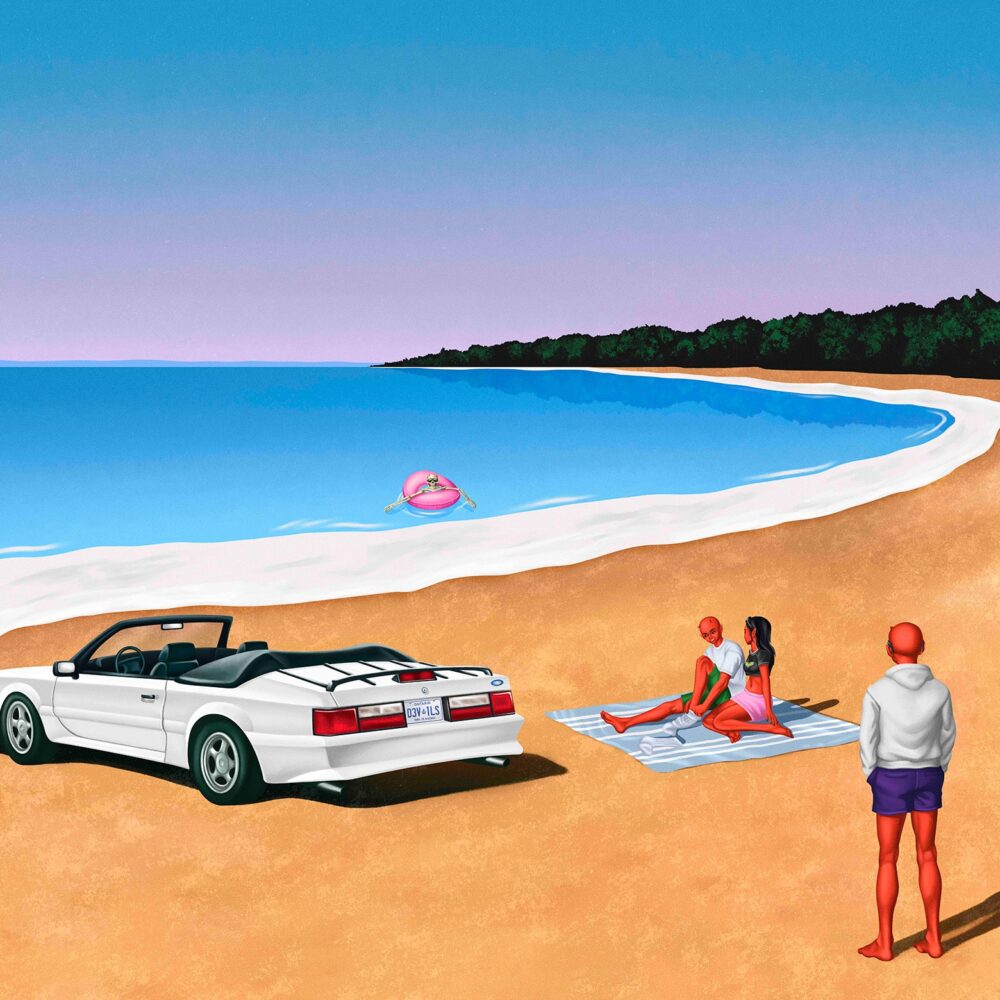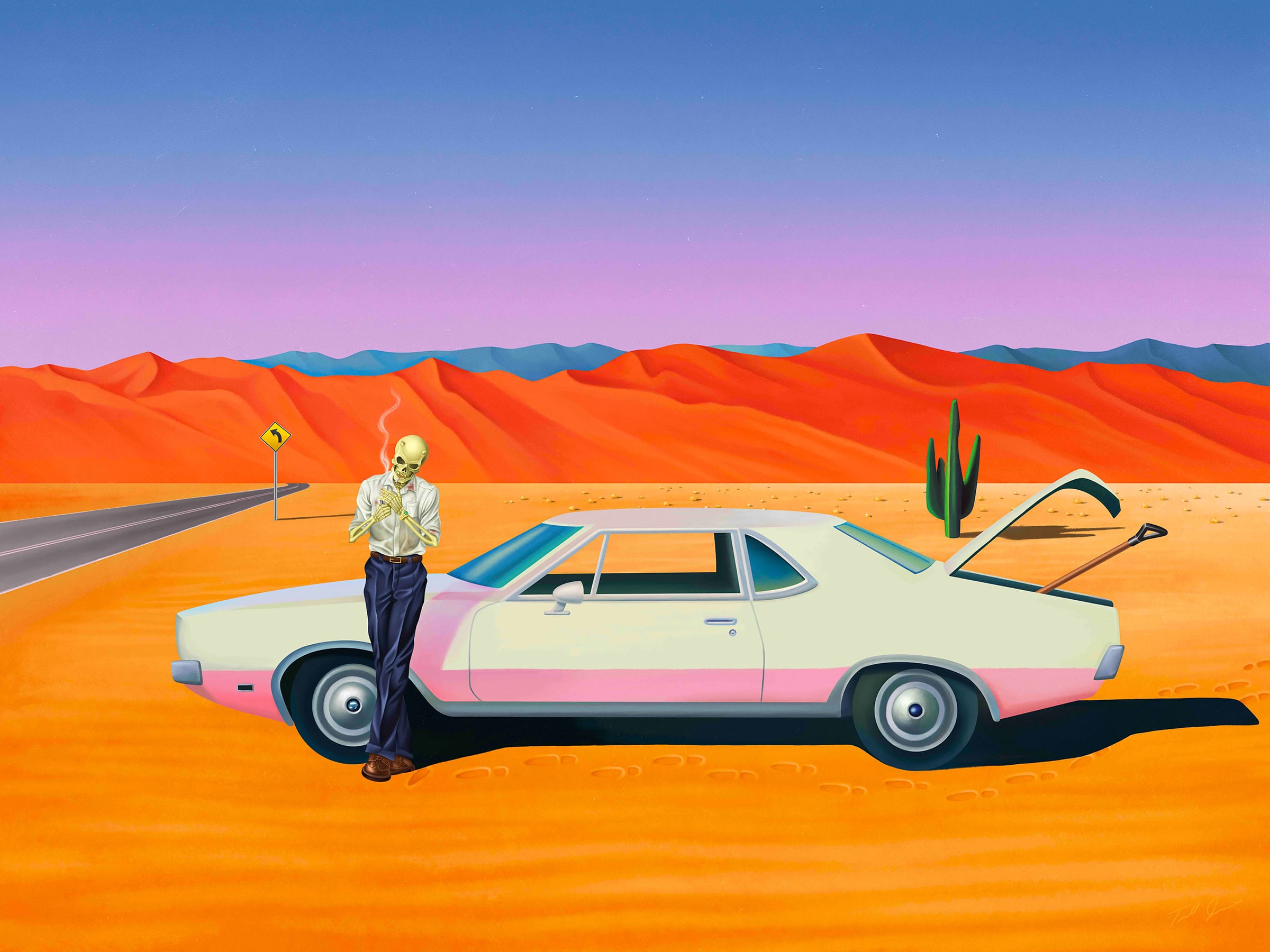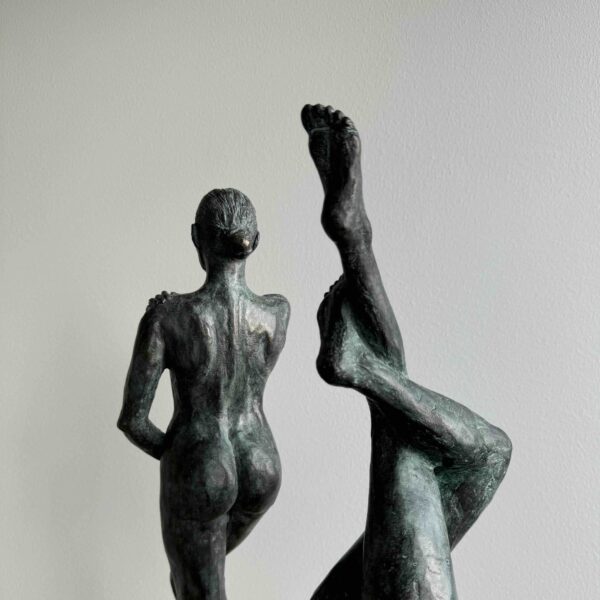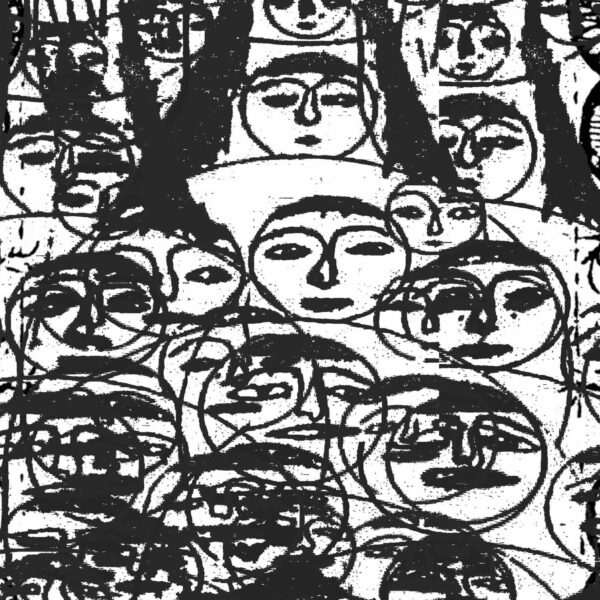The Resilient Spirit of Terrell Jones: Embracing Art for a Brighter Future
Terrell Jones is a digital artist, designer, and creative director from Ann Arbor, Michigan. A creative from a young age, Jones has always been influenced by cartoons, film, manga books, and nostalgia. Jones’ journey from Fedex employee to NFT artist superstar is truly inspiring. In this interview, we dive into Jones’ love of anime, his involvement in the world of footwear, and his unbelievable work ethic. Please note, this conversation has been edited for brevity and clarity.

Q: What were your first memories of creating art?
JONES: I’m from a pretty artistic family. When I was a kid, me and my brothers and sisters always used to draw together. We’ve always been a pretty crafty family, we would make costumes and all that type of stuff, fun box forts. I think that that’s where I get it from. Also, my aunt is actually a really good portrait artist and was definitely someone who showed me what a person could really create. I think one of my first artistic memories was my brother coming home from school one day with this crazy drawing of this character with spiky hair and a big head and cool armor. Basically, he and his friends had drawn Dragon Ball Z characters. That really sparked something in me, and I realized I wanted to make something like that. I remember wanting to create more cool stuff, and bring more cool stuff into the world. I feel like I’ve been that way since.
Q: Did you start drawing immediately from there?
JONES: Yes, I remember in the second grade, my friend Anthony used to always bring Dragon Ball Z drawing books and manga drawing books to class. We used to practice drawing the characters– it would have instructions, and like draw a circle here, go here with it, and then do this. We would always just go to the end image and try to draw that straight up. I remember doing that all the time. Throughout school, I used to draw on the back of my homework, and then the front of my homework. My teachers would be like, “stop it.” Sometimes I would, sometimes I wouldn’t. I was always the person that people came to if you ever needed some help with an artistic part of an assignment. People would watch over my shoulders when I was drawing, and I did start to notice, oh, I guess I must be pretty good at drawing. I was definitely encouraged to continue in that sense.

There's a lot more freedom here because we're not working on prompts for someone else, we're all just doing our own thing.
Q: Was there a particular piece or moment where you decided to start selling your work?
JONES: I used to do commissions and stuff in school. The first commission I can think of would probably be around middle school– it would be little stuff. It’d be like, “Hey, can you draw me an anime character? I’ll give you $5.” When you’re a kid, that’s a lot of money! I was like, “Yeah, sure, I’ll do that. I draw for free right now,” so any sort of money for it, that’s a blessing. I can remember in high school I was definitely drawing a lot of people’s tattoo designs that they wanted to get. Some people had T-shirt brands and stuff, and I would do some of those designs for them. I’ve always had this hustler mentality because I was a kid that wasn’t raised with a lot of money, so I would find ways to get money through art and all types of other things too. I would say that it started off with commissions. After high school, some commissions started to get a little bit more serious. Instead of just $5 or $10 or $15 here or there, it’d be $50 or $100, $200. I started doing album covers, brochures, business cards, anything, really. I wasn’t really known for saying no. Even if I didn’t necessarily know exactly how to do whatever I’m being asked to do, I would figure it out because, like I said, I wasn’t raised with money, so I was pretty much taking any job that I could get in terms of the commissions.
Q: At that time, what did you envision yourself doing as an adult?
JONES: I was really into the shoe design world, so I did workshops and learned at different events. I did a three day workshop with Puma, with Big Sean’s and his mother’s foundation. I really wanted to be in the shoe world. Honestly, if I hadn’t found NFTs, I think I probably would’ve found a way into the shoe world because there were definitely a lot of people that I had met. Everyone is so passionate about their work and wants to create all the time. That’s why I think I’m so in love with the NFT world and the NFT Twitter community. A lot of times, I’ll be up chilling with a bunch of my art friends on Spaces, and we’ll have those similar vibes where we’re all working on different things. There’s a lot more freedom here because we’re not working on prompts for someone else, we’re all just doing our own thing.

Q: What were you up to before entering the world of NFTs?
JONES: Before, I was working at FedEx. I had been working there I want to say around two and a half years-ish, somewhere around there. I ended up quitting my job in May 2021 to pursue art. But again, I still hadn’t sold an NFT or anything at that point. I didn’t know that my artistic success would be through NFTs, I just knew that I couldn’t do the rat race anymore, per se. I knew that even if I failed, I wouldn’t forgive myself if I didn’t try to pursue art.
Q: When you started diving into the NFT rabbit hole, what was that experience like? What has that been like for you?
JONES: When I first found out about it, the thing that was so attractive about it for me was, before this, us artists only got paid in likes and retweets and comments. To actually see people be paid a lot for their work, and it’s not only from commissions, it’s something that they’re doing for themselves and they’re being paid for it, I think that that was super attractive to me.
Q: How did you personally find yourself in the NFT space?
TERRELL: Through one of these shoe design workshops I had done, I met a dude named Jordan Azow. At a certain point, we had both found out about NFTs, and we both wanted to get on to Foundation. At the time, it was probably even more exclusive than SuperRare is right now. It’s really hard to get on, or find your way on. You’d go to the Foundation site, and then they’d be like, “Hey, just go into the Discord and ask for an invite.” Then you’d go into the Discord, and there’s like 1,000 other people that are asking for invites, so it was like a cesspool. At the time, the people were selling invites, and I think that’s how Jordan found one. Basically, we had told each other, “Hey, we both want to get on. If either of us find a way on, we’re going to help the other person get on.” Once he got on there, we learned he would be able to send me an invite once one of his pieces sold. I told him to send me the piece he made and I’d buy it, because I just want to invite that bad.

Q: Did you feel there was any sort of learning curve?
JONES: I never really realized that you need a whole community in order to sell stuff and market yourself and all that. I thought that I could just post my work on Foundation and people would buy it just because it’s good, you know? That was around March of 2021. I think my first piece didn’t sell until August that same year. At the time, I was like, “Why isn’t it selling? There’s a bunch of weird stuff on there that’s selling for tens of thousands if not hundreds of thousands. Why can’t I get a few hundred for this piece that I thought was good?” You know?
Q: How did art transition from more of the hobbyist interest that you described into a more professional full-time experience?
JONES: I really went full time in May 2021. Before that, a lot of the stuff I was doing was just to make stuff that looked cool or to make stuff that looked like other stuff that I was into. I didn’t really have any of these stories that you’re seeing in my art now, any narratives. I used to struggle writing descriptions because I didn’t know what to say about the art besides, “I made this look cool.” I eventually got to the point where I was actually making art that wasn’t hard to give a description of, or talk about at length.
Q: That point you were just making about feeling like you had to make the transition to work full-time as an artist, and the feeling like you wouldn’t be able to forgive yourself if you didn’t at least try, seems like a concept that may ring true for many other people as well. Can you talk more about your mentality during that time?
JONES: Yes, definitely. I think for me, FedEx had just taken so much out of me in terms of at that time, as it was the pandemic. A lot of people will say they got into NFTs because they had been laid off or they had to work from home. For me, it was the opposite– at FedEx, our hours had ramped up because we were essential workers. I found myself at work thinking of all these art pieces I wanted to create, and then getting home and not being able to do anything because I was so drained from work. That had happened so many times on so many days. I was working super hard, and probably harder than I should have been. I just knew that I could still keep on giving my all to FedEx, or I could try to do something for myself for a change. I just knew that I wouldn’t forgive myself if I didn’t pursue it. Because I can do it and try it and fail and I could at least say, “Hey, I tried.”
I just knew that I could still keep on giving my all to FedEx, or I could try to do something for myself for a change. I just knew that I wouldn't forgive myself if I didn't pursue it.
Q: What’s next for you? What goals are you trying to achieve, and what do you think is next in the pipeline for Terrell?
JONES: I’m definitely wanting to get into actual museums. I’m starting to work on my first solo show, so that’s going to be a big goal for next year. I’m wanting to keep on telling these stories, and continue expanding the worlds that I’m building as well. I also want to be a part of the auction houses of the world. MoMA is definitely a goal for me as well. With all of those goals in mind, I think the biggest thing for me is just to keep on creating art that is worthy of those things. I don’t want to be in a museum or auction house just because I’m popular or anything, I want to make great, great art. I definitely have my next probably 10 or 15 pieces lined up, in a sense. I don’t necessarily know in what order I’ll put them out, but I have an idea of each of those pieces.
Q: To people who are trying to break into the NFT world or the art world in general, what advice do you have for them?
TERRELL: Recently, I’ve had a lot of people ask how to get into certain positions, or how to keep up the inspiration. For me, I have a bunch of different pieces lined up in my head because, really, I just want to be able to tell this story, and tell it my way. What I would say to people is– I’m willing to work hard to get whatever I want out of life. I know that’s not something that I can instill in others, it’s just something that you have or you don’t. I know that I want a lot out of life, and I’m willing to work to get there. I don’t think I’m the most skilled artist, I don’t think that I’m the most talented artist, I don’t think that I’m making the best art that’s around, but I know that I’m willing to outwork anyone, or at least that’s how I feel inside.


